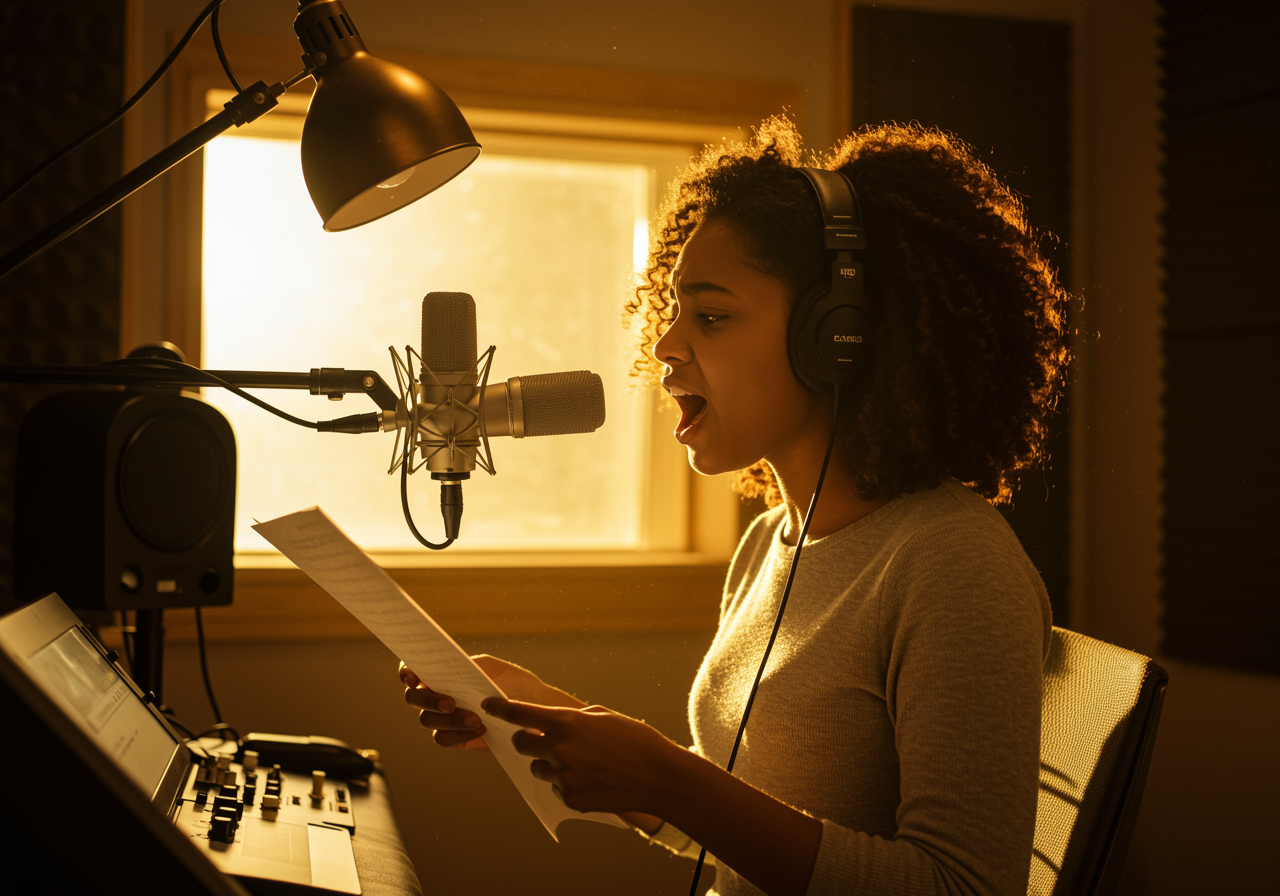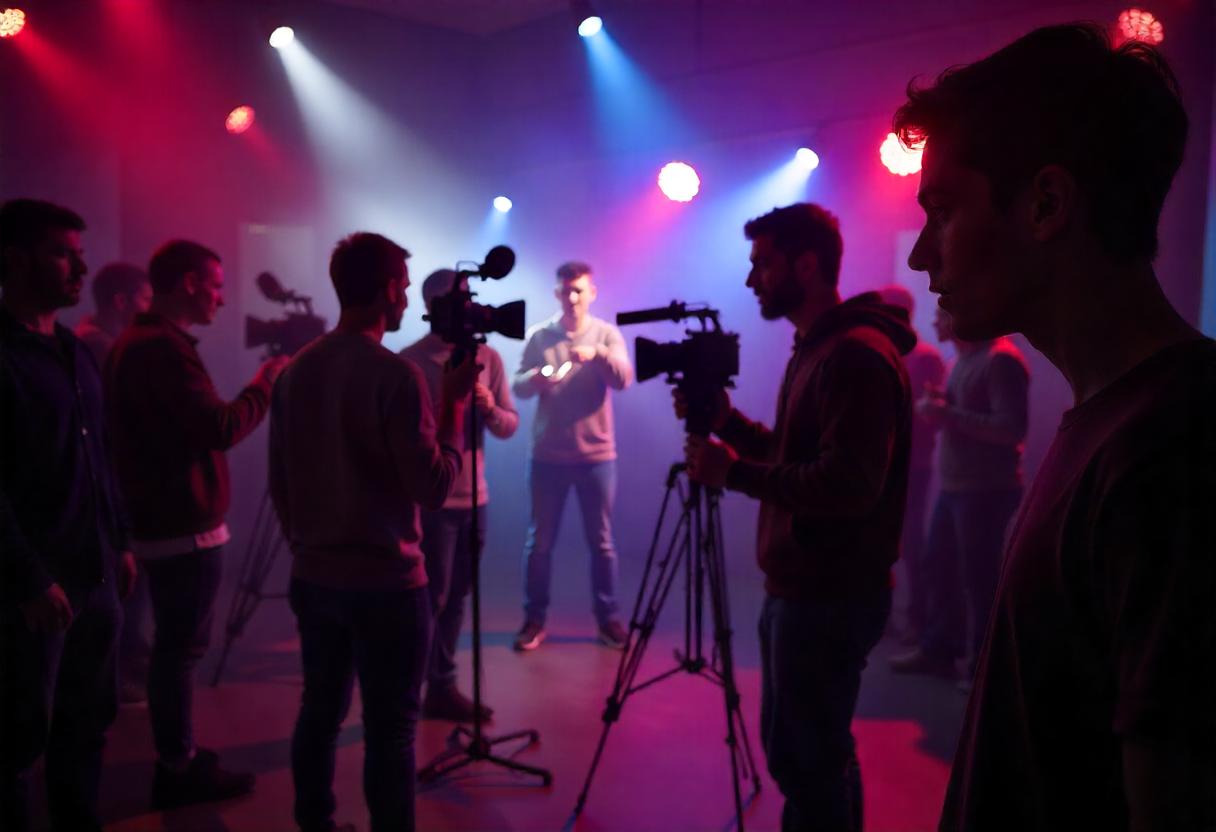The Importance of Body Language in Acting
You walk into an audition room, heart racing. You deliver your lines flawlessly—but the Casting Director looks unimpressed. What went wrong? It’s not always about what you say, but how you say it with your body. Your posture, expressions, and gestures can either bring your character to life or make them feel one-dimensional. The secret? Learning to harness body language effectively through top-level Acting Courses.
In this blog, we’ll cover the key body language elements, audition hacks, and common pitfalls to help you stand out in every performance through the leading Acting Courses across Noida and Delhi NCR.
What is Body Language in Acting?
Body language is defined as a communication technique through the applications of facial expressions, gestures, and body movements. It can either convey a message or add extra spoken words without uttering anything. Since body language plays a key communicational role, its absence, like in text messages or phone calls, can cause misunderstandings, as the listener cannot see the speaker’s expressions or emotions.
The Role of Body Language in Storytelling
Body language carries vast importance in both communication and storytelling in real-time. It plays a crucial role in the conveyance and interpretation of messages. Many students also consider Acting Course Fees when choosing the right training program for their performance enhancement. Key takeaways include:
1. The Role of Body Language in Communication
- Actions Speak Louder Than Words –It’s the facial expressions, gestures, and posture rather than just words that lead viewers to understand emotions and intentions.
- Unconscious Interpretation – We pick up on subtle cues (eye contact, hand movements, mannerisms) subconsciously, which shape our person’s emotions and intention’s understanding.
Do you want free career counseling?
Ignite Your Ambitions- Seize the Opportunity for a Free Career Counseling Session.
- 30+ Years in Education
- 250+ Faculties
- 30K+ Alumni Network
- 10th in World Ranking
- 1000+ Celebrity
- 120+ Countries Students Enrolled
Read Also: Top Film Direction Trends, Techniques and Innovations in 2025
2. Body Language in Storytelling
- Enhances character depth – Just like in real life, plot story’s body language adds character depth, making them more realistic and relatable.
- Should be purposeful – Writers must choose the included body language details carefully , ensuring they contribute to the story rather than just filling space.
- Balances dialogue and action – A character’s words and body language should complement each other, helping readers perform their genuine emotions or hidden intentions interpretation.
Key Elements of Effective Body Language in Acting
Words alone are not enough to bring acting lively characters, body language plays a crucial role in emotional expressions, intentions, and relationships. Here are the key elements of effective body language:
1. Posture
- A character’s stance or body position is the reflection of their emotions and personality.
- Examples:
- Confident – Standing tall with a back shoulder.
- Nervous/Shy – Slouched posture with body language being closed-off.
- Tense/Guarded – Rigid posture, crossed arms.
2. Facial Expressions
- The face conveys a character’s inner dialogue-free emotions.
- Small expressional changes can subtly hint at mood shifts.
- Expressions must align with the scene’s tone and the character’s emotional arc.
3. Eye Contact
- Where an Actor looks and how they maintain eye contact communicates power, confidence, or vulnerability.
- Examples:
- Direct eye contact – Confidence, authority, or aggression display.
- Averted gaze – Nervousness, submission, or guilt suggestions.
- Shifting eyes – Implies lying or uncertainty.
4. Hand Gestures
- Hand movements emphasize emotions and actions in a scene.
- Examples:
- Open palms – Signals honesty and openness.
- Fidgeting hands – Shows nervousness or anxiety.
- Pointing or clenched fists – Can express authority or anger.
5. Body Movement
- How a character moves (e.g., walking, sitting, or reacting) reflects their mind’s state.
- Examples:
- A slow, heavy walk may indicate sadness or exhaustion.
- A quick, energetic stride can suggest excitement or determination.
- Hunched shoulders and hesitant steps may show fear or uncertainty.
Read Also: Why Drama School Is the Best Investment for Aspiring Actors
Book Now →
6. Spatial Awareness
- Understanding how to use stage space effectively enhances storytelling.
- Examples:
- Standing close to another character may indicate intimacy or confrontation.
- Creating distance can represent tension, isolation, or authority.
- Movement should feel natural and serve the narrative.
Body Language Techniques for Actors
Personal space and movement understanding is crucial in auditions and performances. The way you position yourself and enable space interactions can influence how Casting Directors perceive your confidence, presence, and character connection through Acting Courses.
Self-Assessment Before Auditions
- Ask yourself how you enable body language and voice utilization before, during, and after an audition.
- Reflect on past auditions for strength identification and improvement areas.
The Launch Stance for Confidence
- Stand tall, keep relaxed arms, and maintain an open posture to project confidence.
- Avoid slouching, crossing arms, or appearing closed off unless there is a requirement for the scene.
Using Microexpressions
- There are seven key microexpressions for faces, namely contempt, happiness, anger, sadness, fear, disgust, and surprise.
- Learn to control and naturally use these acting expressions.
- Avoid negative expressions when entering or leaving an audition room.
Mastering Space (Proxemics)
- Understand personal space boundaries and use them wisely in auditions.
- Stay in appropriate space zones (personal and social) to create a comfortable interaction with Casting Directors.
Vocal Warm Ups
- Preparing your voice before an audition improves delivery and removes nervousness.
- A strong voice makes your performance more powerful and engaging.
Learning to Build Connection
- Lean slightly towards the Casting Director when engaging in conversations to show warmth and attentiveness.
Purposeful Eye Contact
- Make eye contact while speaking and listening to show confidence.
- Avoid distractions like looking down or around the room.
Building Inner Confidence
- Confidence is a practical skill you can cultivate through consistent practice.
- The key techniques include self-talk in a positive way, confident role models, and routines that are pre-performed.
Pre-Performance Rituals
- Successful Actors follow pre-audition routines to reduce nerves and perform better.
- Creating personal rituals can improve focus, energy, and mindset before auditions.
Read Also: How to Become a Successful Actor: Acting Courses, Skills, and Eligibility

Common Mistakes Actors Make with Body Language
Body language is a powerful acting tool, but when misused, it can weaken performance and create an inauthentic feeling. When enrolling in a training program, considering Acting Course Fees is also important to ensure you get quality and budget-friendly coaching. Here are some common mistakes related to acting and the ways to avoid them:
Do you want free career counseling?
Ignite Your Ambitions- Seize the Opportunity for a Free Career Counseling Session.1. Overacting with Gestures
- Exaggerated hand movements or facial expressions can look unnatural and distracting.
- Fix: Use subtle and controlled gestures that feel organic to the character and scene.
2. Lack of Facial Expressions
- A face that is blank and stiff makes it hard for the audience to understand the character’s emotional connection.
- Fix: Practice microexpressions in front of a mirror to convey emotions realistically.
3. Poor Eye Contact
- Avoiding eye contact or looking in random directions can make a scene feel disconnected.
- Fix: Maintain purposeful eye contact with scene partners or appropriate focal points.
4. Closed-Off Body Language
- Crossed arms, hunched shoulders, or tense posture can signal discomfort or lack of confidence unintentionally.
- Fix: Keep an open, relaxed posture to appear natural and engaging.
5. Inconsistent Movement
- Moving too much or too little can feel awkward and disrupt the scene’s flow.
- Fix: Be intentional with movement, ensuring it aligns with the scene’s tone and the character’s emotions.
Read Also: Acting for Film, TV, and Web Series: The Degree That Opens All Doors
6. Standing Too Stiffly
- Staying in one place rigidly can make a lifeless or unnatural character.
- Fix: Use body shifts naturally and weight changes to add to your presence authenticity.
7. Ignoring Spatial Awareness
- Standing too far or close to other Actors can create awkward on-stage or screen energy.
- Fix: Understand Proxemics and adjust positioning based on the scene’s emotional context.
8. Mismatched Body Language and Dialogue
- When there is a contradiction of expressions or gestures of what a character is saying, the performance feels disjointed.
- Fix: Ensure body language has a strong alignment with emotions and spoken words for an unbelievable performance.
9. Overusing Nervous Habits
- Constantly fidgeting and shifting weight, or playing with props can be distracting.
- Fix: Identify personal nervous habits and practice eliminating them during performances.
Read Also: Top 7 Acting Expressions That Every Actor Must Perfect
10. Forgetting to Breathe Properly
- Shallow breathing can lead to tension, making forced and unnatural movements.
- Fix: Focus on deep, controlled breathing to maintain composure and ease in body movements.
Conclusion
An Actor’s most excellent tool goes beyond just their voice; it’s related to their entire body. Posture, eye contact, gestures, and movement all contribute to a character’s authenticity. Moreover, as you have these elements refined, you will develop an attention-commanding presence. Remember, acting is a complete art—master every aspect, and you will own the stage!
Upscale your passion with an Acting Course in Delhi at AAFT (Asian Academy of Film and Television). With expert training and hands-on experience, AAFT helps you transform your Acting dreams into reality!

AAFT has been providing the world with limitless creativity and expression since 1993! Through a dynamic and industry-driven curriculum, AAFT provides engaging and captivating articles to persuasive blogs and empowers its readers to explore diverse avenues of creative media education-related content.






